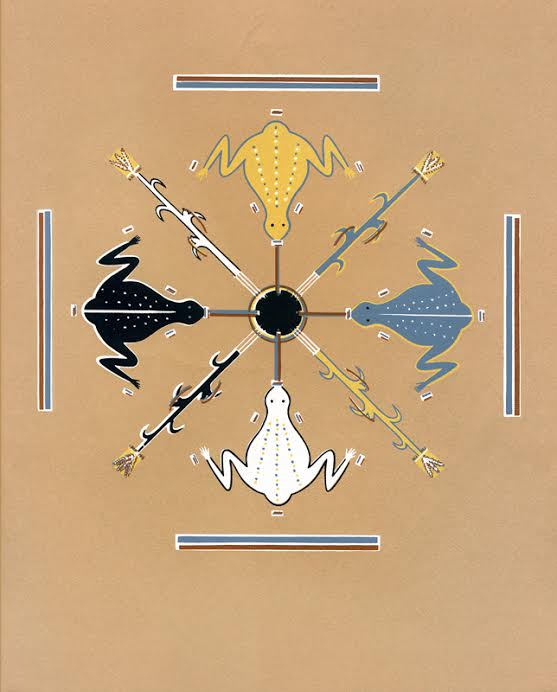ARAS Connections: Image and Archetype - 2008 Issue 1

This edition of the newsletter is a fine example of the many ways in which ARAS Online embodies ARAS as a living history of images and their evolving meaning. Harry Prochaska, a long time curator of San Francisco ARAS, shows how the image of the divine child has expressed itself in different cultures and in different eras. His lead article, an excerpt from his book, Amplification of Symbols, demonstrates how the method of amplification can bring to life the primordial image and its essential meanings. Now deceased, Harry spent many years as a devoted scholar of ARAS and the newsletter will be featuring chapters from his unpublished book over the next several issues. The ARAS Hint section of the newsletter discusses the "alternative commentary" feature of the Online archive. Not only do images and their meanings change over time, but the commentaries of ARAS itself have transformed over time. In many cases, the commentaries have become richer on their second or third incarnation, but we wanted the user of the archive to be able to track the evolution of ARAS scholarship itself by having access to earlier commentaries. Just as an archetypal image itself may change over time, so too our understanding of that development may also evolve. And, finally, the continuing fascination with images and our understanding of them spawns even further exploration in the spirit of ARAS--as in the upcoming Art/Psyche Conference that Ami Ronnberg, Curator of National ARAS, announces in this newsletter. This is not an ARAS-sponsored event, but it certainly is in the tradition of ARAS and its original Eranos conferences in which images and their meanings were given deep consideration.
Tom Singer, M.D.
Co-Chair of the ARAS Online Committee
Images of the Divine Child
Mythologies are stories of the birth and childhood of gods, of the exploits and encounters with each other and their excursions in the human world. Even when these stories center around a single god or goddess, they do not comprise a biography; they are not chronological narrative. Instead they relate a manifestation of a god and his interactions with other beings of the cosmos. Carl Kerényi writes: "The gods are so 'original' that a new world is always born with a new god -- a new epoch or a new aspect of the world. They are 'there,' not only in the beginning when they themselves originated, and not only in the periodic repetitions of that first origination, i.e., cosmic reappearances and representations on festal occasions. Though they are present all the time, the mythologems which unfold in narrative form what is contained in the figures of the gods are always set in a primordial time. This return to the origins and to primordiality is a basic feature of every mythology."
A particular aspect of this "primordiality" becomes concentrated in the appearance of the god as divine child and since this is a psychic genesis, everything must happen non-empirically, e.g. by a virgin birth, a miraculous conception or birth from unnatural organs. "The motives of 'insignificance,' exposure, abandonment, danger, etc., try to show how precarious is the possibility of psychic wholeness, that is, the enormous difficulty to be met with in attaining this 'highest good.'" These stories show the god in the "full perfection of his power and outward form."
The stories of the birth of Hermes and his exploits as a child serve as fine examples of the essence of the god (or a particular power) at his beginning to be retold many times over in many other situations. Maia and Zeus conceived Hermes, in the deepest night when heavy sleep had overtaken Hera protecting them from her jealousy. Hermes was born at dawn, and by evening had stolen the herd of cattle which belonged to his brother, Apollo.
Click here to see images and the rest of this article
Contents
Become a Member of ARAS!
Become a member of ARAS Online and you'll receive free, unlimited use of the entire archive of 17,000 images and 20,000 pages of commentary any time you wish—at home, in your office, or wherever you take your computer.
The entire contents of three magnificent ARAS books: An Encyclopedia of Archetypal Symbolism, The Body and The Book of Symbols are included in the archive. These books cost $330 when purchased on their own.
You can join ARAS Online instantly and search the archive immediately. If you have questions, please call (212) 697-3480 or email info@aras.org
We Value Your Ideas
As our newsletter grows to cover both the ARAS archive and the broad world of art and psyche, we're eager to have your suggestions and thoughts on how to improve it. Please send your comments to info@aras.org. We look forward to your input and will reply to every message.
Subscribe
If you're not already a subscriber and would like to receive subsequent issues of this newsletter by email at no cost, e-mail us at newsletter@aras.org.
